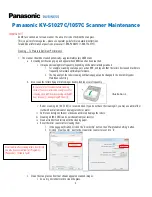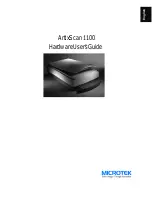
60
FBC
Feedback Carburetor. This
is used on early versions of
computer controlled
engines. It is a carburetor
which can have its air/fuel
delivery modified by an
electronic signal from the
ECA. Three versions are
used. See definitions for
FBCA, FCS and VRS.
FBCA
Feedback Carburetor
Actuator. Used on
feedback carburetors –
those where the engine
computer controls the air/
fuel ratio.
The FBCA is a stepper
motor (see Stepper Motor
definition). It controls a
metering assembly in the
carburetor which can vary
the amount of air entering
the main discharge area.
The computer uses FBCA
to vary this metered air and
control air/fuel mixtures
anywhere from “rich” to
“lean”.
FCS
Feedback Control Solenoid.
Used on feedback
carburetors – those where
the engine computer
controls the air/fuel ratio.
This solenoid receives a
duty cycle signal from the
computer. (See Duty Cycle
definition.) The solenoid
introduces fresh air from
the air cleaner into the idle
and main system vacuum
passages. A low duty cycle
signal reduces air passing
through the solenoid for
“rich” operation. A high duty
cycle signal increases air
passing through the
solenoid for “lean”
operation.
FMEM
Failure Management and
Effects Mode. The name
given to the way the ECA
operates when failures are
detected in sensor or actuator
circuits and normal operation
is no longer possible. The
ECA runs the engine the best
way it can until the vehicle
driver can get the problem
repaired. The effect on engine
performance can be slight or
severe.
Frequency
The frequency of an
electronic signal is a
measure of how often the
signal repeats a voltage
pattern in a one second
time span. For example:
suppose a signal starts at
zero volts, goes to five
volts then returns to zero
again. If this pattern
repeats itself 100 times in
one second, then the signal
frequency is 100 cycles per
second – or 100 Hertz.
Fuel Injector
An electronically controlled
flow valve. Fuel injectors
are connected to a
pressurized fuel supply.
(The pressure is created by
a fuel pump.) No flow
occurs when the injector is
off (not energized). When
the injector is powered, it
opens fully allowing the fuel
to flow. The ECA controls
fuel delivery by varying the
amount of time the injectors
are turned on.
FP
Fuel Pump relay. The ECA
energizes this relay to
apply power to the vehicle
fuel pump. For safety
reasons, the ECA removes
power from the fuel pump
when ignition signals are
not present.
FPM
Fuel Pump Monitor signal.
This is a wire between the
ECA and the fuel pump
motor power terminal. The
ECA uses this signal to
verify when voltage is at
the fuel pump (for
diagnosing fuel system
problems).
Ground
The return path for current
to flow back to its source.
(Usually the negative
battery terminal.) It is also
the reference point from
which voltage
measurements are made.
That is, it is the connection
place for the minus (-) test
lead from the voltmeter.
HEDF
High-speed Electro-Drive
Fan relay. The ECA
energizes this relay when it
determines extra engine
cooling (more than that
provided by EDF) is
necessary. Depending
upon the vehicle, the HEDF
relay will either speed-up
the same fan used by EDF,
or it will turn on a second
fan mounted in front of the
radiator.
HEGO
Heated Exhaust Gas
Oxygen sensor. An EGO
sensor (see EGO
definition) having a built-in
electric heating element.
The heater reduces sensor
warm-up time.
Hertz (Hz)
A term for frequency –
cycles per second.
IAC
Intake Air Control.
IDM
Ignition Diagnostic Monitor.
A wire between the ECA
and the switched side
(Tach terminal) of the
ignition coil. The ECA uses
this circuit to check for the
presence of ignition pulses.
Inputs
Electrical signals running
into the ECA. These
signals come from sensors,
switches or other electronic
modules. They give the
ECA information about
vehicle operation.
Integrated
Relay Control
Module (IRCM)
A single module containing
several relays and some
other circuitry. The ECA
uses these relays for
control of functions such as
fuel pump, air conditioner
clutch, electric cooling fan
and EEC-IV system power.







































